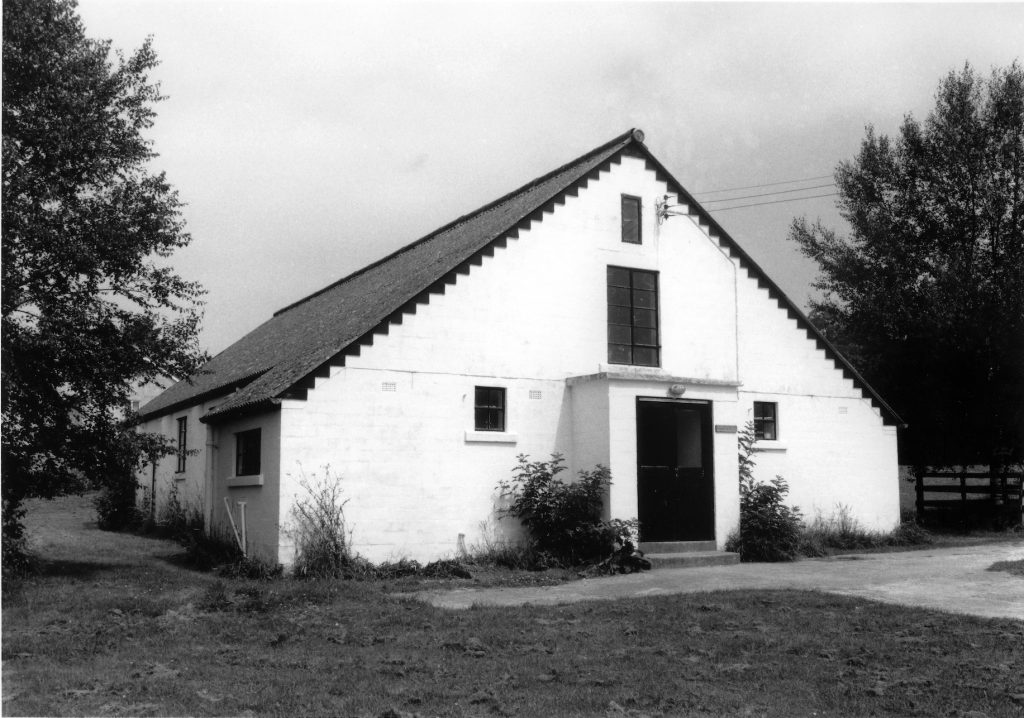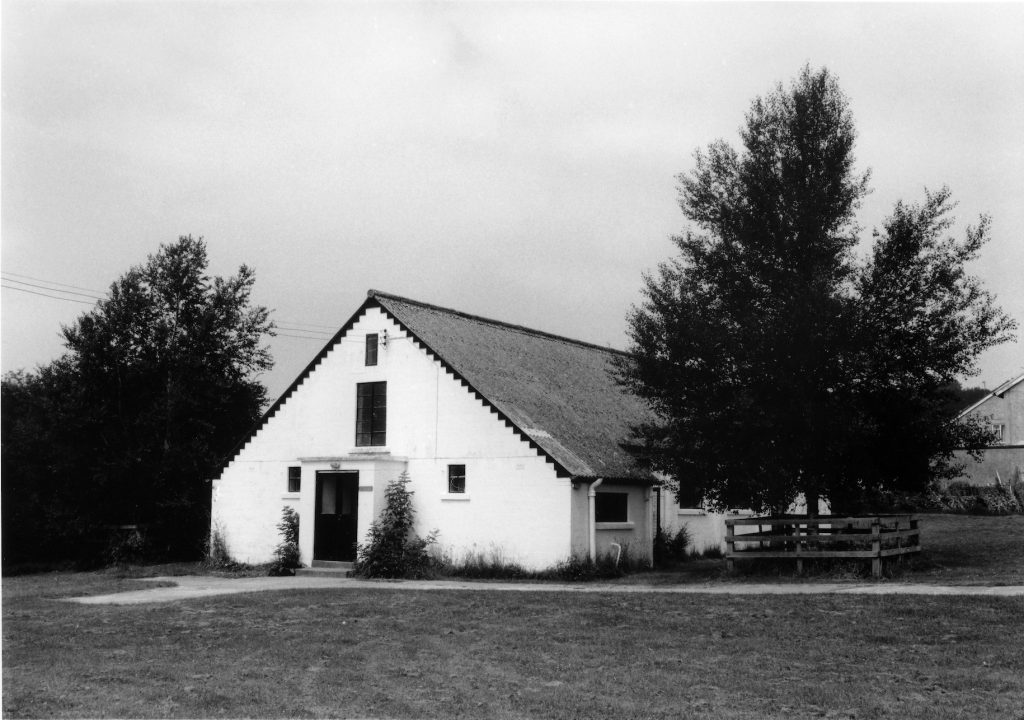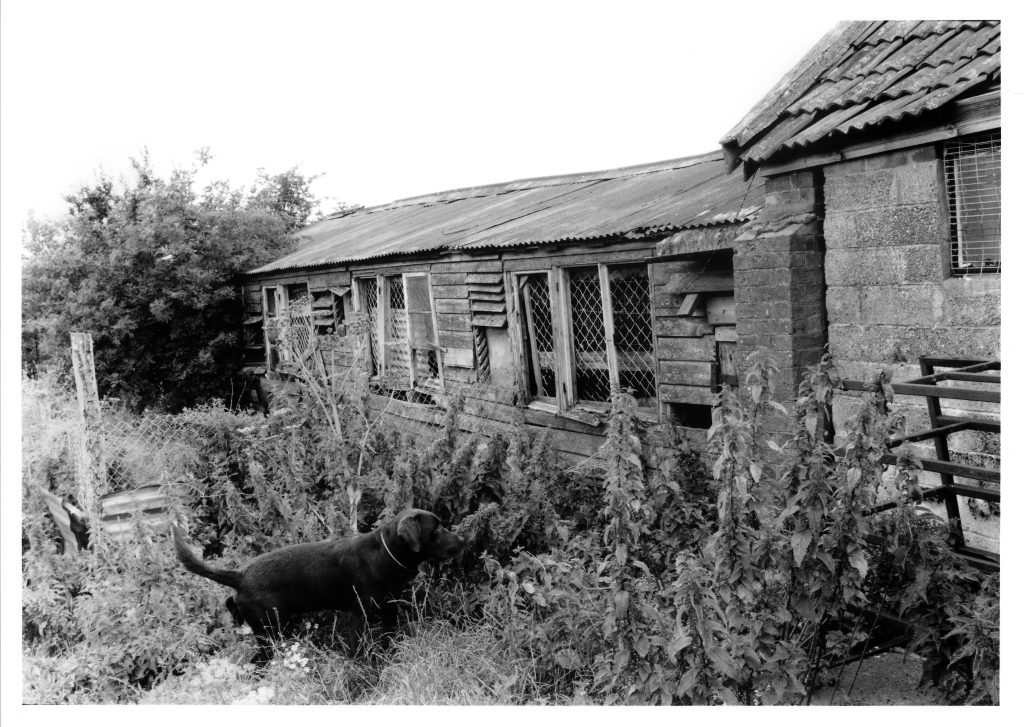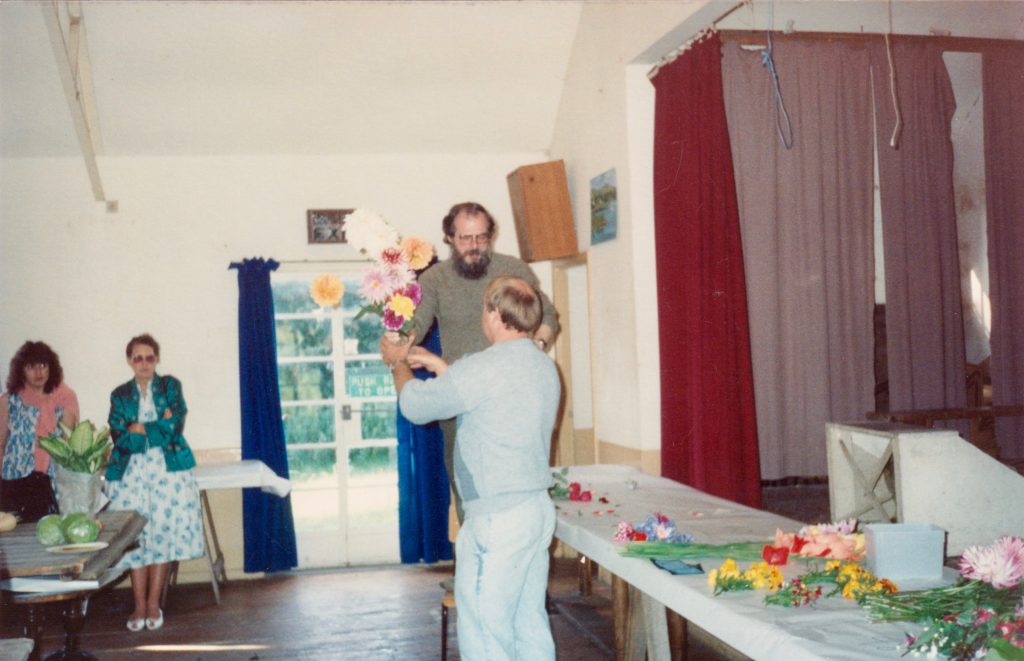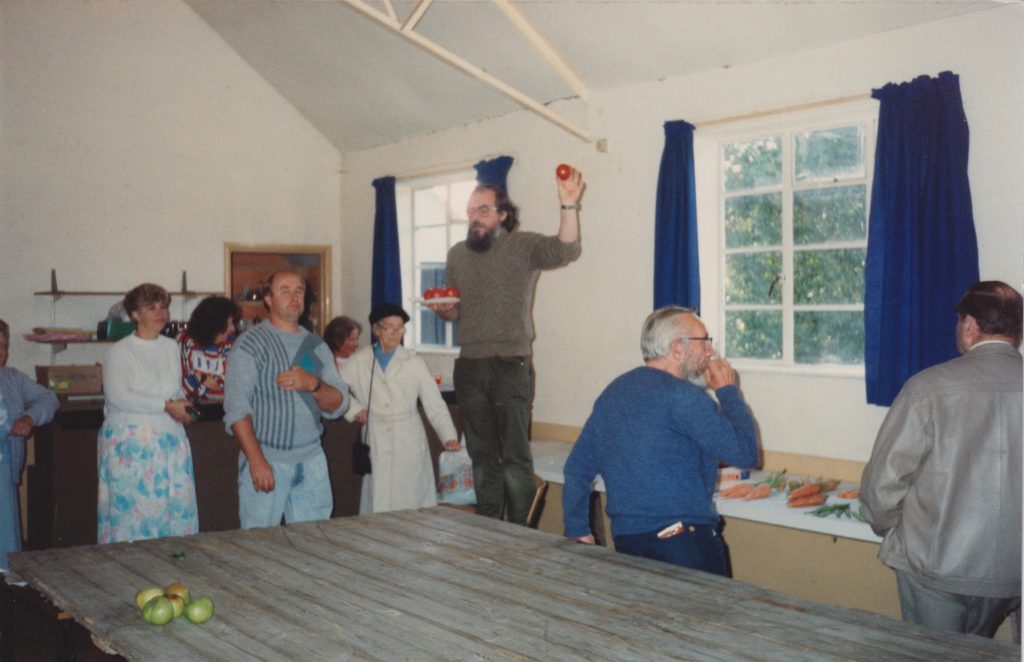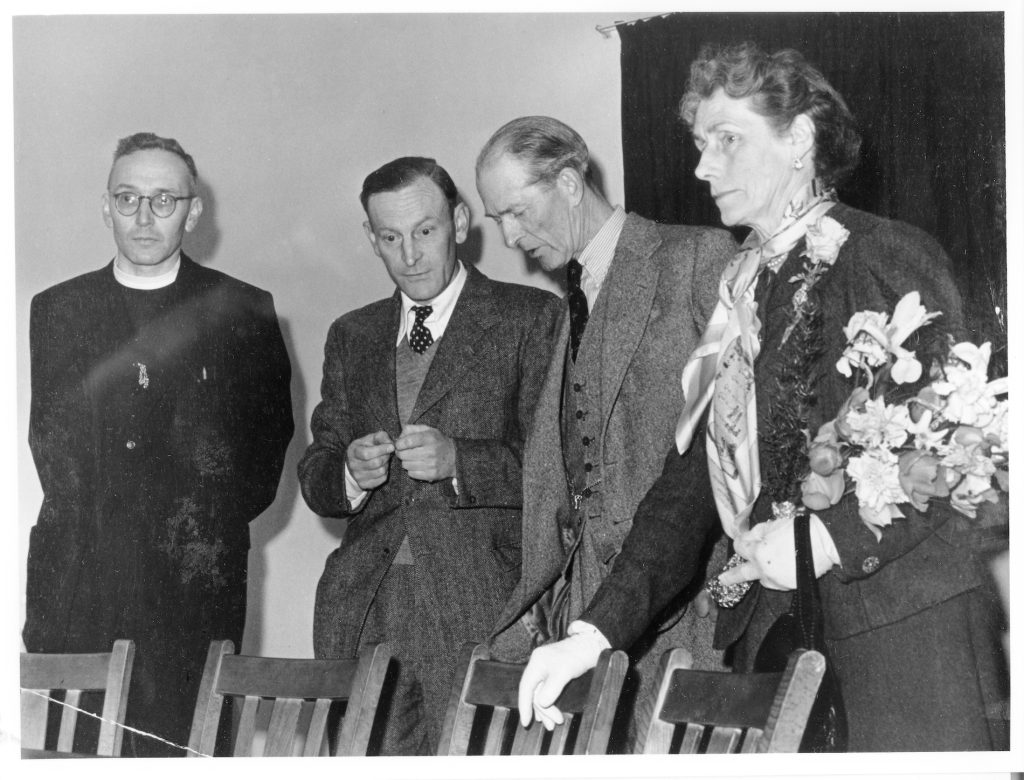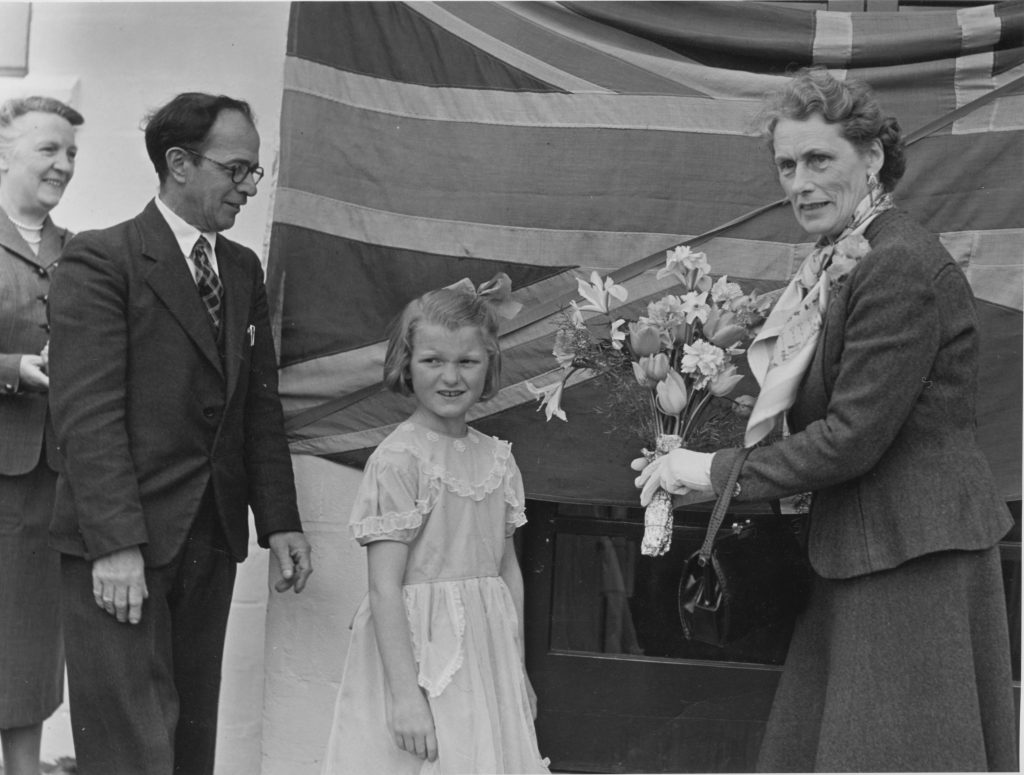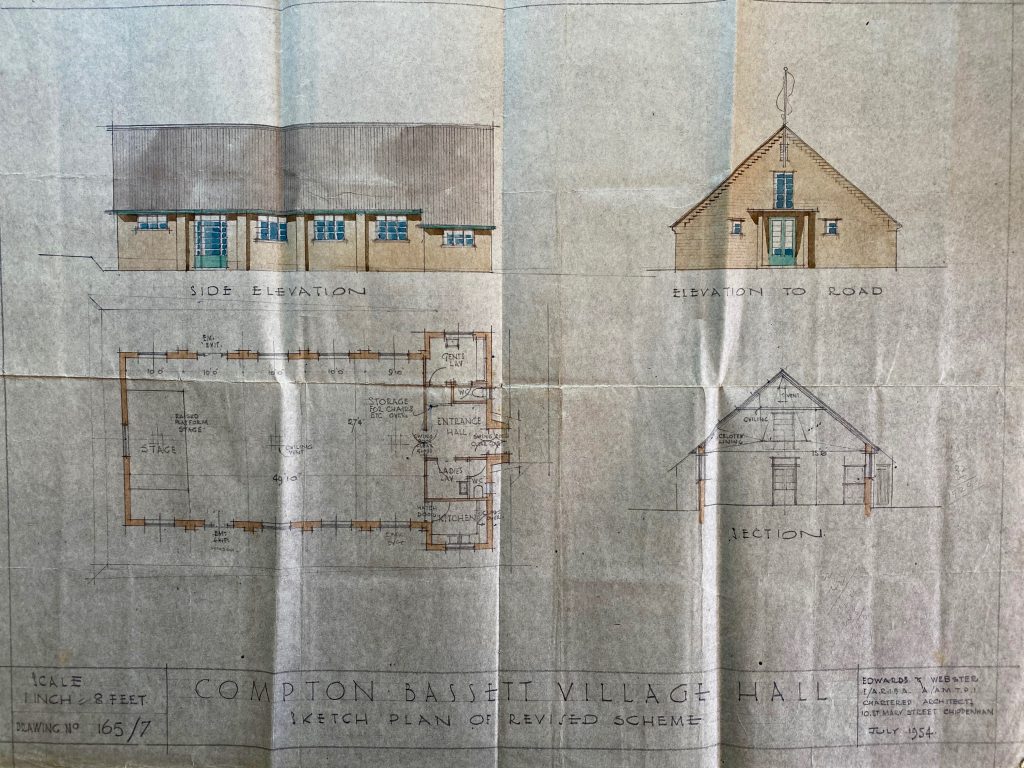
When Captain Guy and Lady Violet ‘Letty’ Benson bought Compton Bassett House, 2 farms and land totalling 777 acres from the Co-operative Wholesale Society in 1929, they began making plans for a new home. The old house, all but discarded by the Co-op for 10 years, was deteriorating fast. In the end, they decided to demolish it and build up the stable block for their accommodation, whilst renting Avebury Manor for several years. It was to be a country retreat for Benson, who had just inherited after the recent death of his father, along with his brother Rex. The family were merchant bankers in London; the company later merged to become Kleinwort Benson. Guy and his wife Letty, second daughter of the 8th Duke of Rutland, were well-known socialites in aristocratic circles. Yet for all their wealth and privileged life, they began to take an active interest in the village. They organised numerous garden fêtes on the grounds of the house to raise money for various local causes and made donations to others.
There being no village hall, the school was occasionally used for meetings and Christmas parties. This was often inadequate and so, in 1934 Guy and Lady Benson arranged for Devizes builders W. Chivers & Son to install an old 69ft x 15ft timber recreation room at the top of what was called School Hill, a little east of where the war memorial is now. Even then it had a slightly temporary feel and the building shook when dances were held there. Yet it served a purpose for village gatherings and the Home Guard, who used it during the war years as a canteen and for drills. Benson was Commander of Compton Bassett’s 41-strong platoon.
In December 1944 the Home Guard was stood down, though not disbanded. The War Office encouraged them to form Rifle Clubs for continued practice. As the old building was not suited for this function, discussion commenced about a longer,
50ft covered shooting range; this soon grew into a much larger scheme to create a village hall for both purposes. Guy Benson was very much the driving force and at the outset saw to it that the new hall should be properly set up as a Charitable Trust. He was also careful to foster villagers’ involvement to ensure it would function as a true community resource. Rationing of food and clothes would go on for some years following the war and building materials were prioritised for housing and schools. Knowing that this would seriously delay any hall building, at a meeting on April 19th 1945, Benson impressed on villagers the need to raise money towards an overall target of at least £500 (about £23,000 today) through fêtes, jumble sales, whist drives and the like. A unanimous show of hands approved the whole project.
At the next meeting in May 1945, Benson announced he had been given two promises of subscriptions under a “7 Year Covenant” scheme totalling £805 which after recovery of income tax meant £1,610 to the new Trust. Added to this was a grant from the National Council for £500. It would be another 10 years before plans came to fruition but in the meantime a committee of ten was elected: Guy & Lady Benson; Mr & Mrs Birnstingl; Mrs Deuchar; Mrs Godwin; George Moore; Donald Pickford; Reg Rumming; Sam Rumming. Captain Fielding-Johnson had been elected but withdrew until the end of the year (his son Hugh had just been killed in the final weeks of the war).
But where would the new hall be built? Several sites were inspected yet one, next to the White Horse Inn, stood out. This was owned by Bristol Brewery Georges & Company and in July 1945, Guy Benson called at their offices to ask if he could purchase the frontage of the field next to the Inn. They agreed and also offered a larger portion of land at the back (future Briar Leaze). The same month, a fête was held in Compton House grounds, which realised £132-11s-3d (£6,000 today!). In December, Benson rang Mr Hadley, the MD of Georges, to ask him for a valuation for the field. Hadley rang back the same day to say that, “My directors are going to give you that land.”
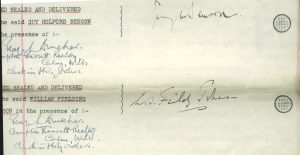
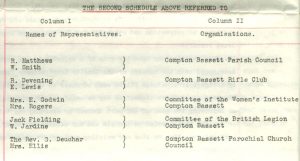
1947 Original document vesting the land with the Charity Commission
The first elected officers from the new trustees were: Chairman – Guy Benson, Vice-chairman – Charles Birnstingl, Treasurer – Mrs Winifred Cooper, Secretary – Rev. George Deuchar.
Fundraising continued each year, the 1946 summer fête realised £251-5s-3d and a similar amount in 1947 meant that the original village target of £500 was already doubled by 1948. Yet frustratingly, there remained no prospect of building the hall any time soon; even concrete posts for fencing were unobtainable. Guy Benson then announced that he would shortly be leaving the village. The blow of this news was tempered by an offer to the hall committee that he would be gifting them the end almshouse cottage at 18 Compton Bassett plus the paddock on which the old hall stood. At the last meeting Benson was present, Captain Fielding-Johnson, who replaced him as committee chairman, pressed him for disclosure about the two “7-Year Covenants” that were held in favour of the Hall Trust. Reluctantly, Benson revealed to the meeting that one was his and the other belonged to his wife, thereby disclosing another act of their great generosity.
In 1951, Fielding Johnson resigned due to ill health and Ron Rogers took over as chairman; Fielding-Johnson died in 1953. In July 1954 architects Edwards & Webster issued a revised plan for the new hall.
£3,000 was now available in cash, enough to build the new hall and so work started on the 28ft x 60ft building in late 1954; the cost was £2,767 – 9s – 7d. It was finished in time for a grand opening on Wednesday 11th May 1955, for which occasion Guy & Lady Benson returned to the village to see the new hall bearing their name.
At the ceremony, Benson told villagers, “People thought it would be nice to have a permanent village hall. You have had to wait ten years to see that dream come true.” “May this hall for ever be the happiest meeting place for the whole community, so that you can foster the old village spirit which has been such a priceless factor in making our old country great.” The village could be very pleased and proud of what it had done, he told them.
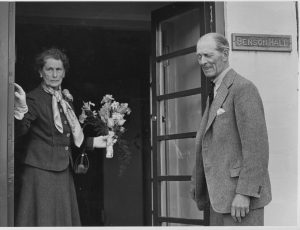
The hall was first extended in 1995 with the addition of a kitchen and bar, and a second extension built on the first by adding an office and disabled toilet facilities in 1999. 2002 saw the installation of double-glazed windows and the following year work commenced on the rear extension of a large storeroom, completed in 2004.


LAURIE WAITE
